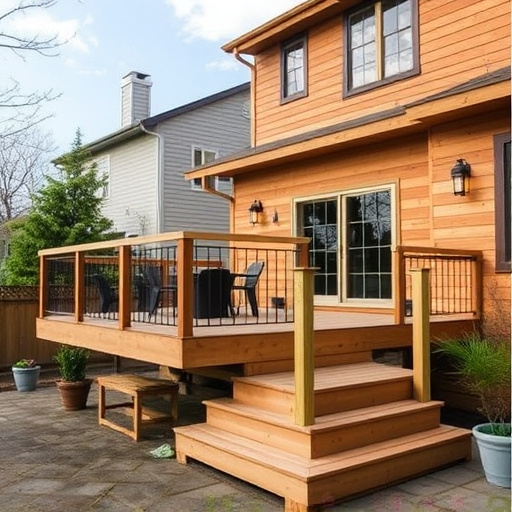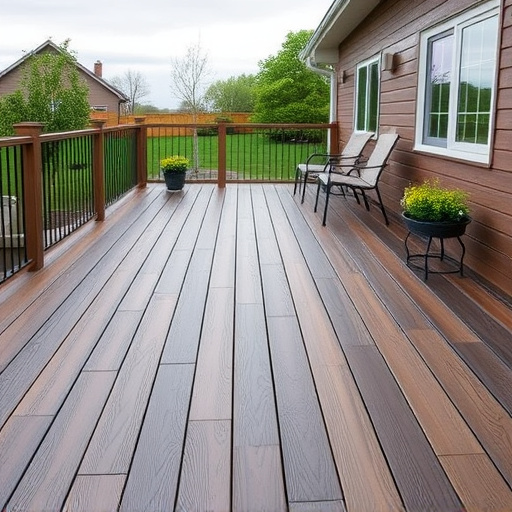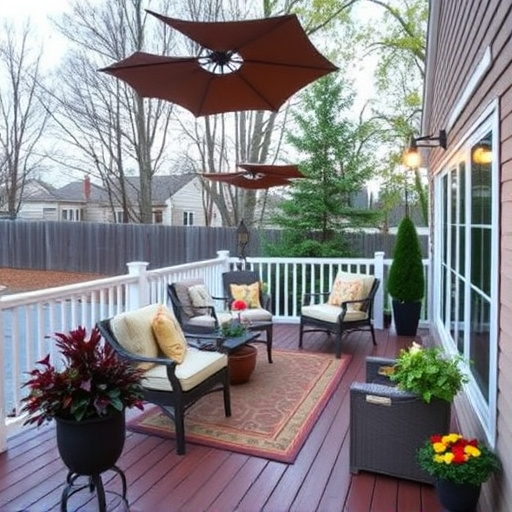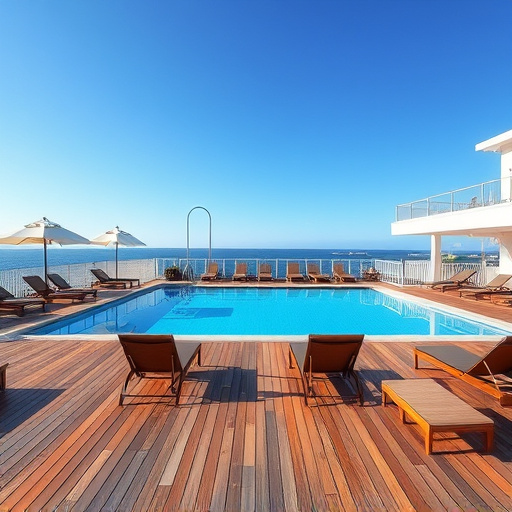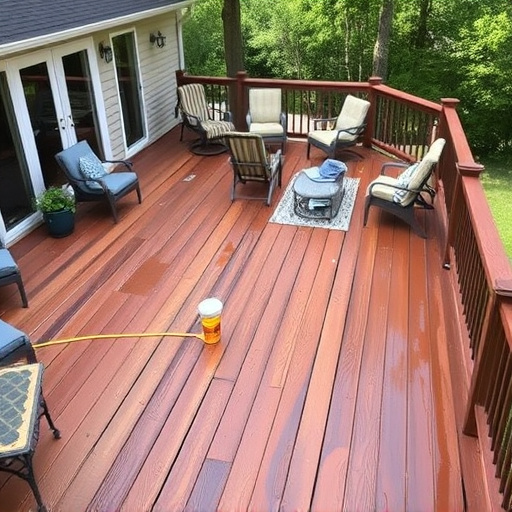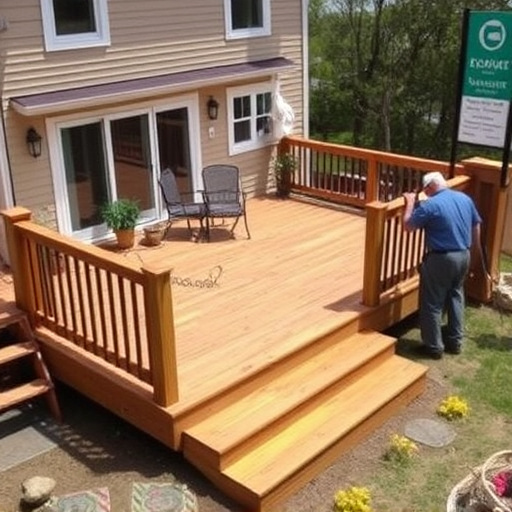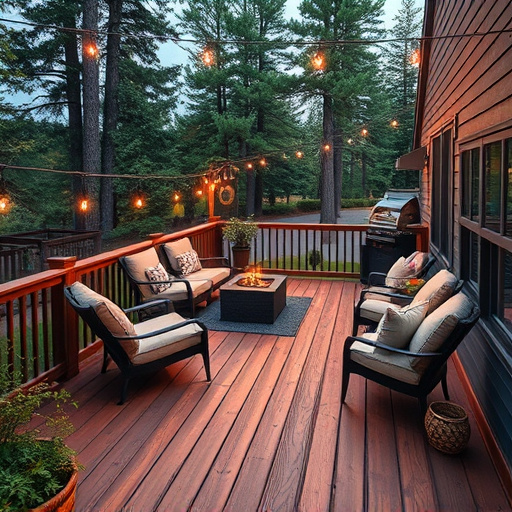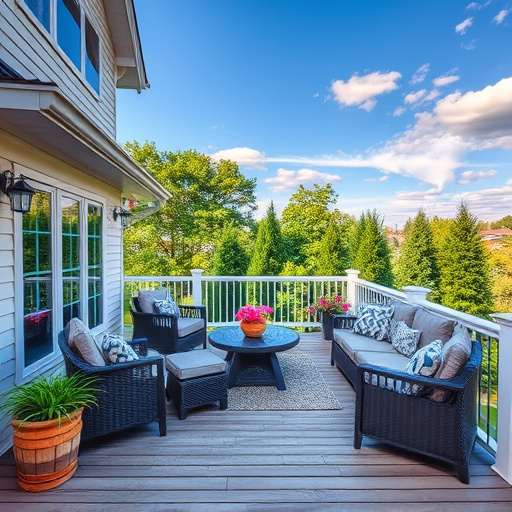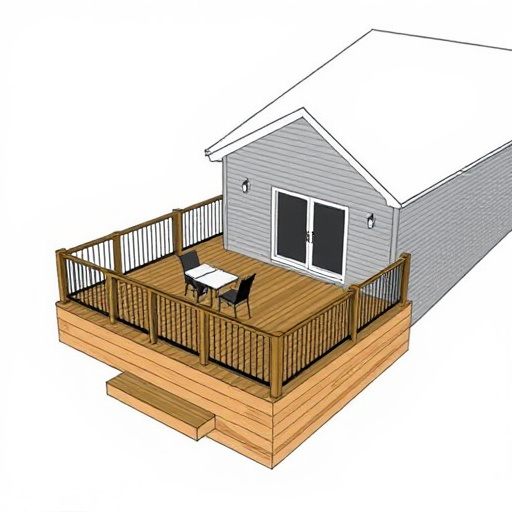Ground level deck options balance aesthetics and functionality. Wood offers natural beauty but requires regular maintenance for longevity (10-25 years). Composite decking provides superior durability, reduced maintenance, and diverse design options but has higher upfront costs. Choose composite for longer-lasting structures with less upkeep or wood for greater customization in styling.
When considering a new ground level deck, choosing between wood and composite materials is a key decision. This article guides you through the process, offering insights into the pros and cons of each option. We explore the durability and low-maintenance benefits of composites, as well as the natural beauty and classic appeal of wood. By understanding the factors that matter most – budget, upkeep, aesthetics, and environmental impact – you’ll be equipped to select the perfect deck for your outdoor space.
- Understanding Wood Decks: Pros and Cons
- Composite Material Advantages and Disadvantages
- Factors to Consider When Making Your Choice
Understanding Wood Decks: Pros and Cons
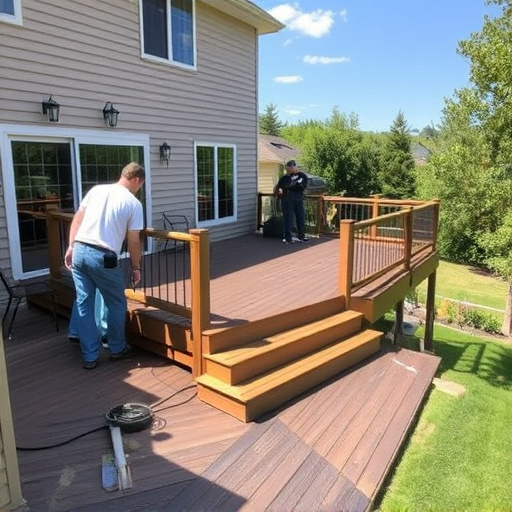
Wood decks have long been a popular choice for ground level deck installations, offering both aesthetic appeal and functionality. The natural beauty and warmth of wood enhance outdoor living spaces, creating inviting environments for relaxation and entertainment. However, there are considerations beyond the initial allure. Wood decks require regular maintenance to protect against elements like rain, snow, and UV rays from the sun, which can lead to rot, warping, or fading over time. This involves annual sealing, staining, or painting to preserve the wood’s integrity. The lifespan of a wooden deck is typically around 10-25 years before significant repairs become necessary, often involving costly storm damage repair and replacement of individual boards.
Despite these maintenance requirements, many homeowners appreciate the versatility of wood in terms of design and customization. Wood decks can be built to suit various architectural styles and personal preferences, allowing for unique layouts, integrated lighting, and even built-in seating or fire pits. When it comes to exterior home improvements, wood offers a classic and timeless look that can increase property value. However, it’s essential to balance these advantages with the potential drawbacks, especially in regions prone to harsh weather conditions. In such areas, exploring alternative materials like composite decking might be more practical for long-term durability and reduced maintenance, offering a viable roofing solution for exterior spaces.
Composite Material Advantages and Disadvantages
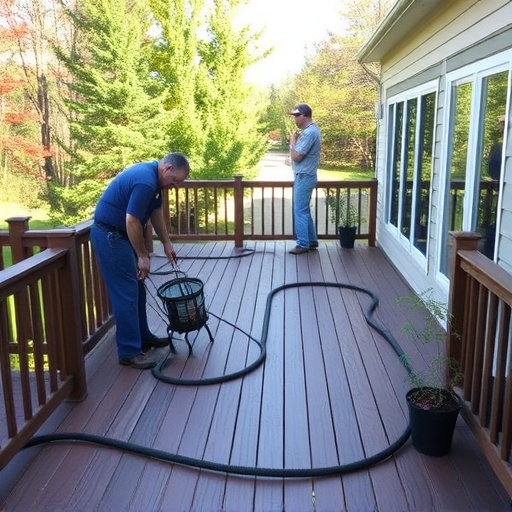
Composite materials offer a range of advantages when it comes to building a ground level deck. One significant benefit is their durability; composite decking is resistant to rot, decay, and insect damage, ensuring your deck remains strong and stable over time. This makes them an excellent choice for exterior home improvements, as they require less maintenance than wood and can withstand varying weather conditions. Additionally, composite materials are versatile in terms of aesthetics, available in various colors and styles to complement different architectural designs.
However, there are some disadvantages to consider. Composite decks often come at a higher upfront cost compared to wooden options, which might be a significant factor for those on a budget. Moreover, while composite materials are low-maintenance, they may not offer the same level of customization in terms of design and finishing as traditional wood decking. Unlike siding replacement or roofing services, where composites can be more versatile, ground level deck construction using these materials may limit certain aesthetic choices.
Factors to Consider When Making Your Choice
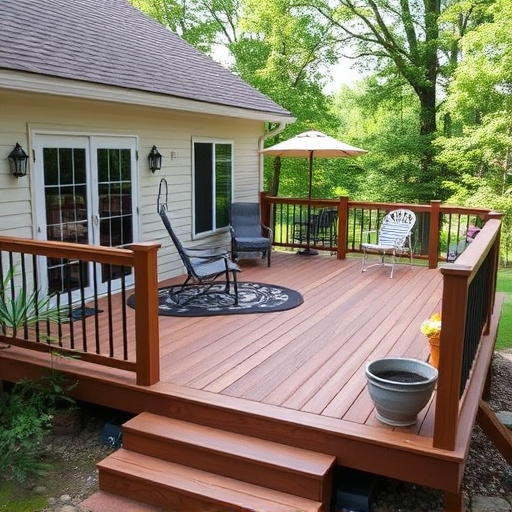
When deciding between wood and composite for your ground level deck, several factors come into play. First and foremost, consider the longevity of each material. While wood requires regular maintenance like staining or sealing to protect against elements, composites are designed to resist fading, cracking, and warping, making them a low-maintenance option.
Additionally, think about your budget. Composite decks generally have a higher upfront cost compared to wood, but they can save you money in the long run due to reduced maintenance needs. Home service solutions for repairs or siding installation are also less frequent with composites. Conversely, wood offers versatility in styling and color choices, which might align better with your aesthetic preferences, potentially inspiring more creative roofing and siding designs.
When deciding on a ground level deck, whether wood or composite, understanding the unique benefits and drawbacks of each material is key. While natural wood offers charm and versatility, composite materials provide low-maintenance durability. Several factors like budget, climate, and aesthetic preferences will guide your choice. By carefully considering these aspects, you can create the ideal outdoor living space that enhances your home and enjoys for years to come.






